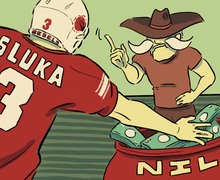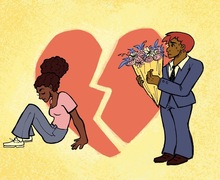Student loan rates to double in July
Student loan interest rates will double July 1 for about eight million loan borrowers.
Each year, almost eight million low- and moderate-income students receive federally subsidized student loans, according to a March 13 U.S. Public Interest Research Group news release. The interest rates are expected to double from 3.4 percent to 6.8 percent on new loans by the July deadline.
Kaye DeVesty, director of the Office of Financial Aid and Scholarship Programs at Syracuse University, said about 63 percent of SU undergraduates have borrowed under the Federal Direct Student Loan program.
‘This is a loan administered and funded by the government to help eligible students pay for college,’ DeVesty said in an email.
The average subsidized loan borrower would have $2,800 in increased student loan debt over a 10-year repayment term, according to the release.
The more money taken out, however, the larger the increased interest becomes. If the maximum amount of $23,000 is assumed, borrowers will experience a ballooned interest of an additional $5,000 over a 10-year repayment period and $11,000 over 20 years, according to the release.
‘Bottom line, it costs more to borrow,’ DeVesty said.
In March, college students delivered about 130,000 letters to Congress urging legislators to keep the interest rate at 3.4 percent, according to a March 20 Time magazine article.
In Washington, D.C., this has become a partisan issue.
President Barack Obama and other Democrats have urged Congress to extend the low rate and Rep. Joe Courtney of Connecticut has introduced legislation to stop the rate hike. Democrats predict it will cost the government $3 billion to keep the rate at 3.4 percent for one additional year. In opposition, Republicans are in favor of doubling the rate and say it would cost the government nearly $7 billion to keep the rate down, according to the article.
Mark Kantrowitz, publisher of FinAid.org, estimated the cost at $5.6 billion for one year, according to the article.
Congress’ tight budget makes it difficult to cover the costs of interest-rate reduction.
At first, the doubling of the interest rate seems very negative, as students are graduating with a record-high average debt of $25,000 and the total outstanding student loan debt is expected to top $1 trillion this year, according to the article.
The 3.4 percent current interest rate, however, has only been in effect for one year, according to the article. The rate deduction plan was passed by Congress in 2007 as the College Cost Reduction and Access Act. Since the passing, the interest rate on subsidized loans fell until it reached 3.4 percent this year. This is the same year the act is set to expire.
Also, an interest rate of 6.8 percent is still fairly low, as private student loans average 9 to 11 percent interest rates, according to the article.
If the government decides to contribute the billions needed to keep the interest rates low, legislators will likely be forced to cut spending elsewhere, according to the article.
Though DeVesty said the loan is still excellent in many respects, she would like to see the interest rate remain at 3.4 percent.
Dee Lockett, a senior communications and rhetorical studies and English and textual studies major, said she feels the hike is quite negative for students. She said the loans she applied for to attend SU amounted to a large sum, so a higher interest rate will only make it more difficult to pay back.
Lockett, a contributing writer to The Daily Orange, said she applied to graduate school to defer her loans further. She said she had to take out another loan to attend graduate school.
Said Lockett: ‘This is not reassuring at all.’
Published on April 11, 2012 at 12:00 pm





